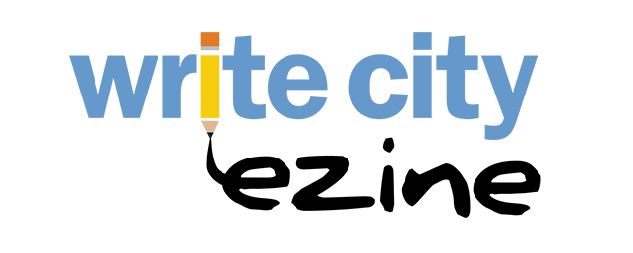
December 28, 2013
Poetry’s Principle of Impact
A Conversation with Shannon Matesky and Lisa Buscani
by Meghan Owen
As artists we influence the world, whether we directly intend to or not. We work within communities, within homes and within minds. We could attempt to write all off and say that art can exist for art’s sake, but the truth is, whatever environment we construct it in is going to be effected due to the simple reason that art is there. How much control do artist have over the impact of their work? Examples of two schools of thought on the matter are two talented and innovative women, Shannon Matesky and Lisa Buscani.
Matesky is a performance artist, educator and poet, originally from Berkley California. She got her degree in acting at DePaul University and utilizes her education in theatre with her talent for poetry. Since her graduation she has done work with and for Kuumba Lynx, Chicago Dramatists, Step Up Women’s Network, Chicago Young Authors and wrote and performed her own one woman show.
Shannon Matesky
Buscani is a poet, performance artist and professor from Toledo, Ohio. After graduating from Boland Green she moved to Chicago and spotted an ad in the Reader for a poetry slam. Since then she has worked with the Neo Futurists, toured on a one woman show and became faculty at DePaul University for ethics and screenwriting courses.
Lisa Buscani
Both women got their start competeing in national poetry competitions and found it therapeutic in different ways. Shannon, in her words, had finally found “a means to be heard when no one would listen.” Lisa too, found a place to flourish. When competeing at the Green Mill she recalls the act as some sort of ritual, “We showed up every Sunday night at the Green Mill like it was church and created a body of work in that venue. I did really well from that kind of work.” Here, we can see the presence of art affecting those who are witnessing it. It’s a case of art perpetuating itself and creating more artists.
“It was a place of healing. It empowered me to speak,” Shannon says, as she further explains her experience competeing in Youth Speaks. “I’m trying my best as an educator to give that gift and to express oneself.”
What Shannon is speaking to here is indicative to the communication and social impact of art. As an artist, she wishes to teach with her work and encourage more than just her own self-expression, however; she aims to achieve this goal with passionate and careful intention.
“I know I will be heard first and some people are going to count my voice as the word of many,” she explains emphatically. “I know that if I speak up it has to be in earnest and in honor of others.”
Shannon makes the point that she strives to share the knowledge that she has gained with those who do not have same opportunities as she. Identifying strongly with African American communities, Shannon states, “The activism in my heart tells me to share my education with my brethren. It is the responsibility of a person of color to share as much education as they can with other people of color because it was denied to them. I may not be a person of color but I grew up in an unequal education system. I want my people to be smart. I want my people to thrive.”
Lisa Buscani, who is just as positive and passionate about her work, has a different approach. “I don’t think of my work as being driven by any political agenda,” explains Lisa. “It breaks down nicely to be able to inform as well as entertain. I don’t think I’m going to change my world. I want to give people 10 minutes of respite.”
Lisa’s take here showcases an interpretation that speaks to a little more Deism. Meaning, even though the artist’s influence is not intended, it still influences individuals in ways that weren’t dictated once the artist has left the picture.
Working with various sketch shows, performance poetry and writing events, Lisa has created a slew of work through on-the-spot prompts. “At Write Club, which has a one word prompt, you have to come up with a piece after that one word. I got the word rise and I thought about what it would be like to survive the loss of a relationship, about picking yourself up from a place so low.”
From one-word prompts like this one, or from other venues and companies like Paper Macheteand The Encyclopedia Show, Lisa is able to craft topical artwork that can speak to anything from current political moods to present interpretations of mythology. Though it’s not as specifically driven to educate, this genre of improv performance literature inherently schools the reader/listener in contemporary knowledge-pools and social attitudes.
Coincidentally, both Lisa and Shannon have performed in one woman shows. Lisa’s work was with the touring comedy Late Night Catechism and Shannon wrote and performed her own work called She Think She Grown. These productions are neat representations of the different modes of impactful artwork.
Late Night Catechism is impactful through its theme of the shifting Catholic Church and though it’s not necessarily meant to change the minds the audience, it still offers them details and opinions on Catholicism that could affect the audience’s preexisting notions.
She Think She Grown by Shannon Matesky is a piece crafted with a specific impact. It is the story of Shannon’s life and her love and her hardship but its intention is to connect the audience with hope. “I want to speak to the women. To the hopeless. To the abandoned. I want to tell them that there is a light at the end of the tunnel if you put one there and if you chase after it,” says Shannon. "The universe will put no more on you then you can handle. If you are handling a lot you are meant to. You can live through it and testimony.”
Ultimately, artistic literature is a force. It can be carefully forged with an intended destiny or simply given. Regardless, it still has an edge, an impact. Whether you wish to control the outcome of the impact is a free, subjective decision. Yet, like inspiring artists Shannon Matesky and Lisa Buscani, you have to be aware that you will have a boundless effect on those who are listening.
Write City Ezine is currently open to submissions. See submission guidelines for further information.
Affiliates/Partners
Testimonials
Contact
Join CWA
Member Profile
My Account
Writers Conference
Presenters
Agents and Publishers
Pitch Sessions
Sponsors
Scholarships
Speaker Registration
Book of the Year
Spirit Award
First Chapter Contest
Resources
Home
Chicago Writers Association
info@chicagowrites.org
Make a Difference!

